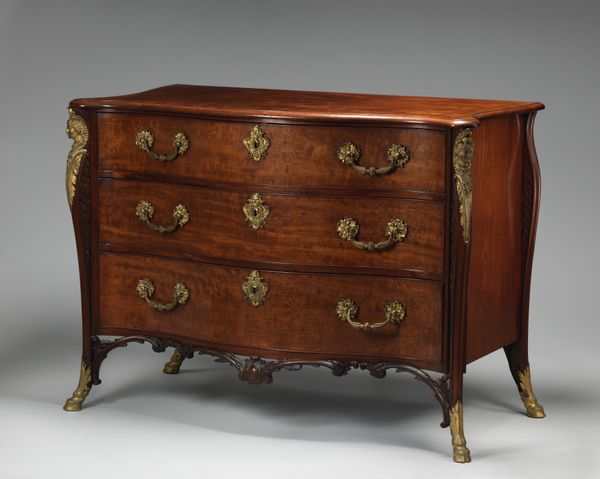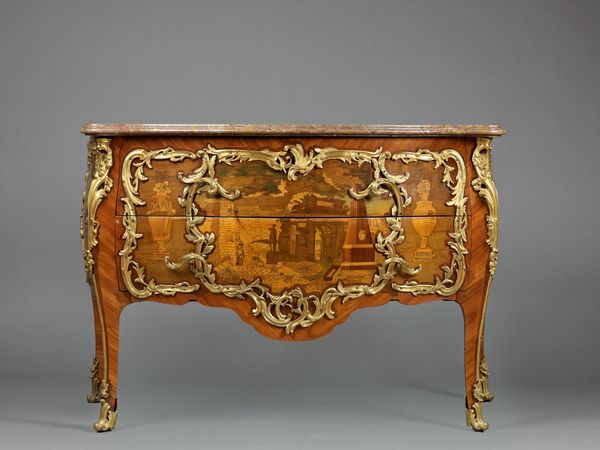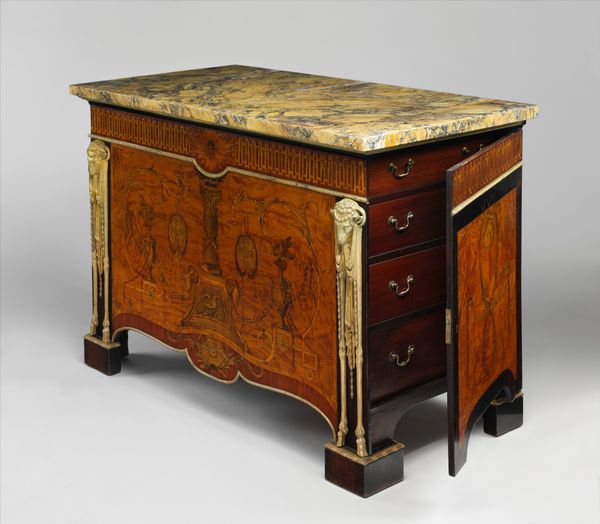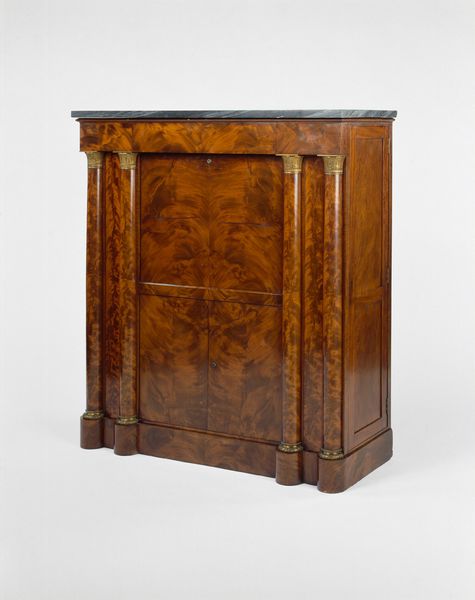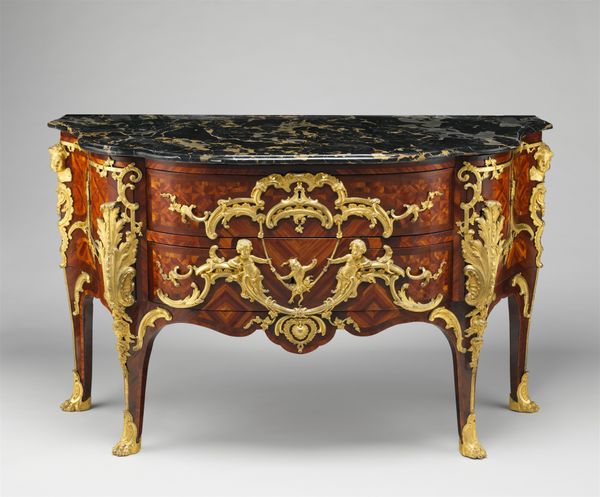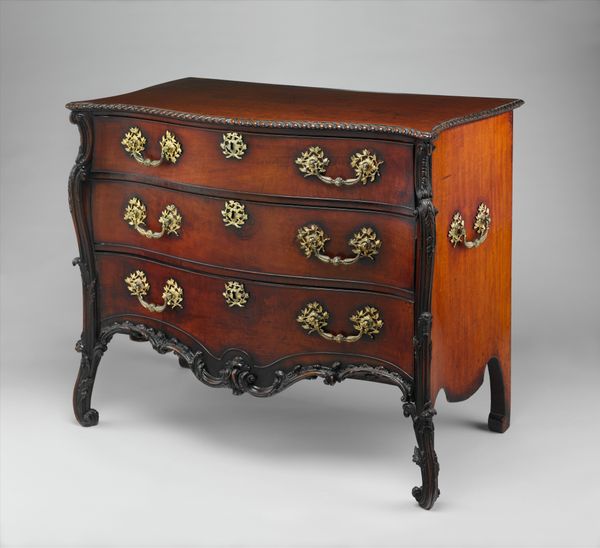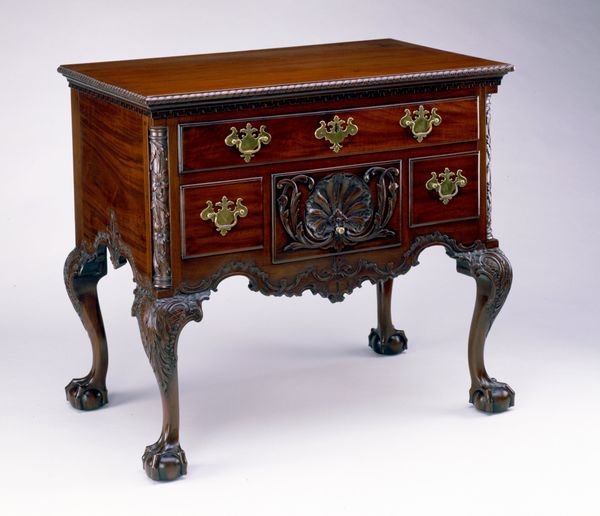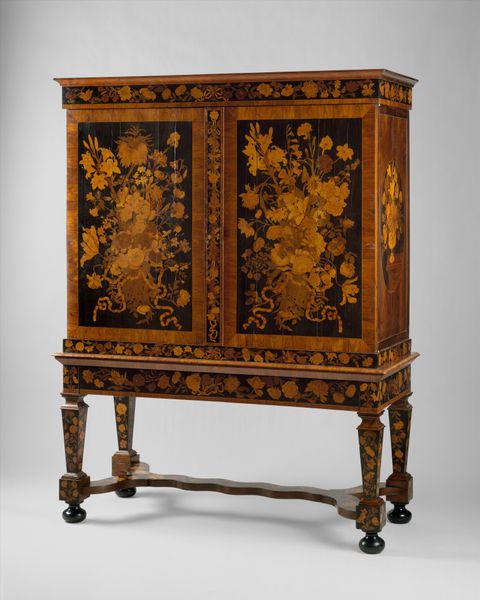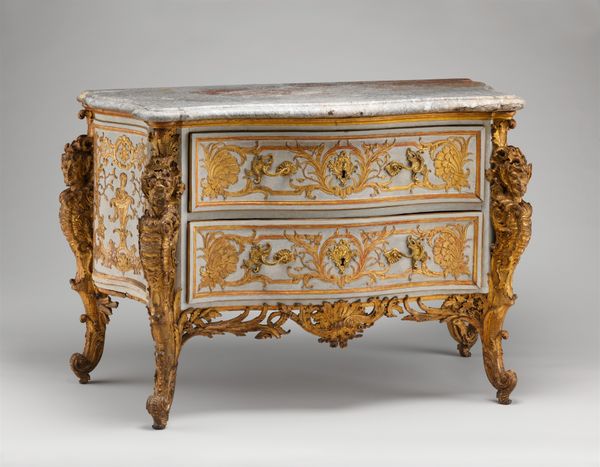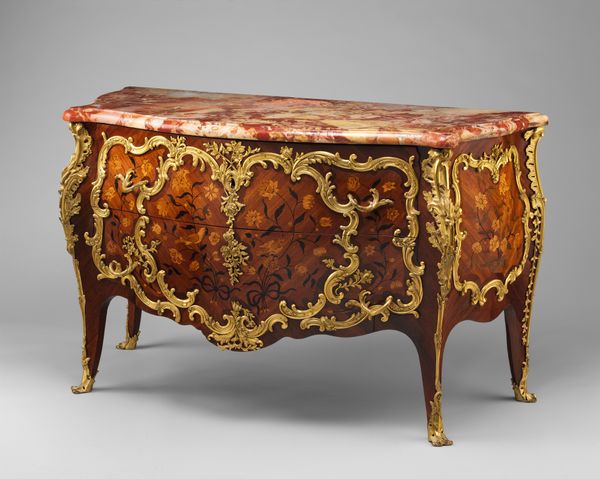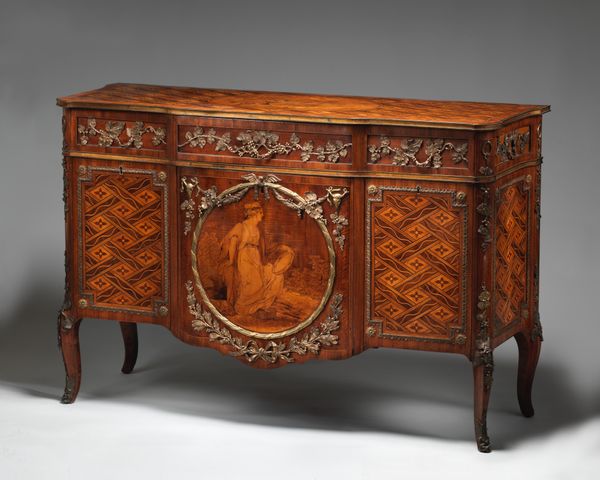
Dimensions: Overall: 36 7/8 × 49 3/4 × 21 1/4 in. (93.7 × 126.4 × 54 cm)
Copyright: Public Domain
This commode was made by John Mayhew in the 18th century. It’s primarily crafted from wood, with exquisite marquetry and ormolu mounts. The commode's visual impact relies heavily on the wood itself – its grain, texture, and color. The burled veneer creates a lively, almost painterly surface. Then there's the meticulous marquetry: tiny pieces of wood precisely inlaid to form floral patterns and classical motifs. This was intensely labourious work, demanding exceptional skill. The gilt bronze ormolu mounts add a touch of opulence, catching the light and accentuating the commode’s form. These techniques belong to a long history of furniture making, where the artisan’s touch was highly valued. The commode speaks to the intricate relationship between labor, materials, and social status. It challenges us to look beyond mere aesthetics and consider the social context of its creation. It stands as evidence of a time when furniture was not just functional but also a potent symbol of wealth and status.
Comments
No comments
Be the first to comment and join the conversation on the ultimate creative platform.


